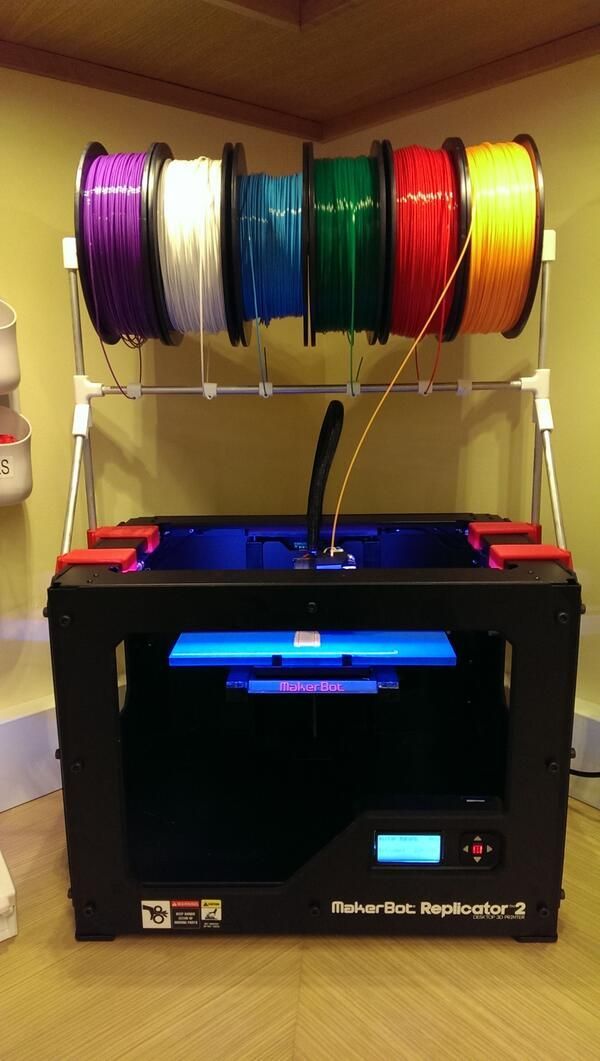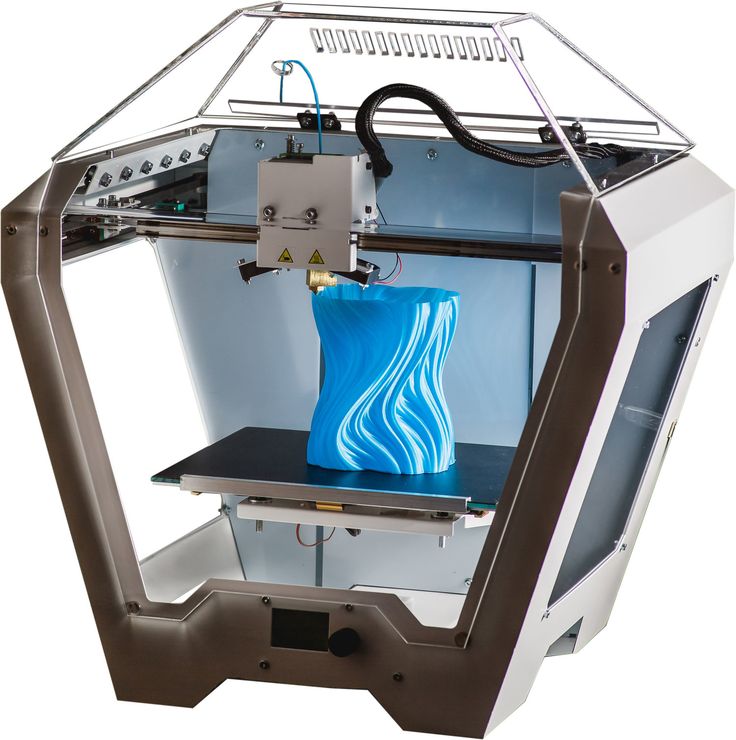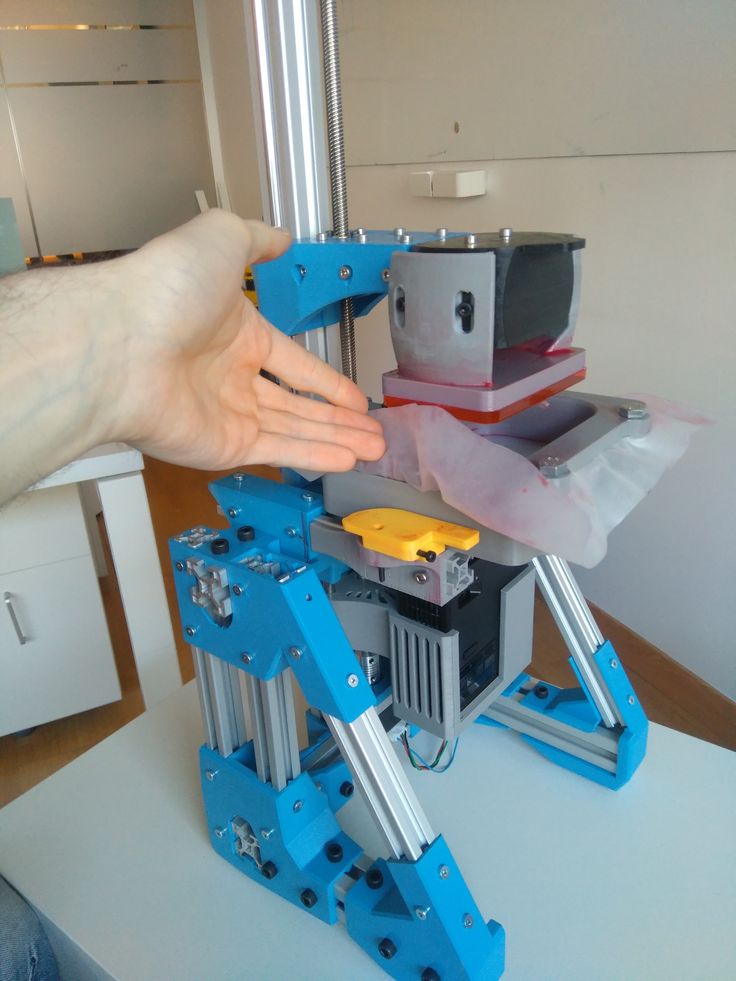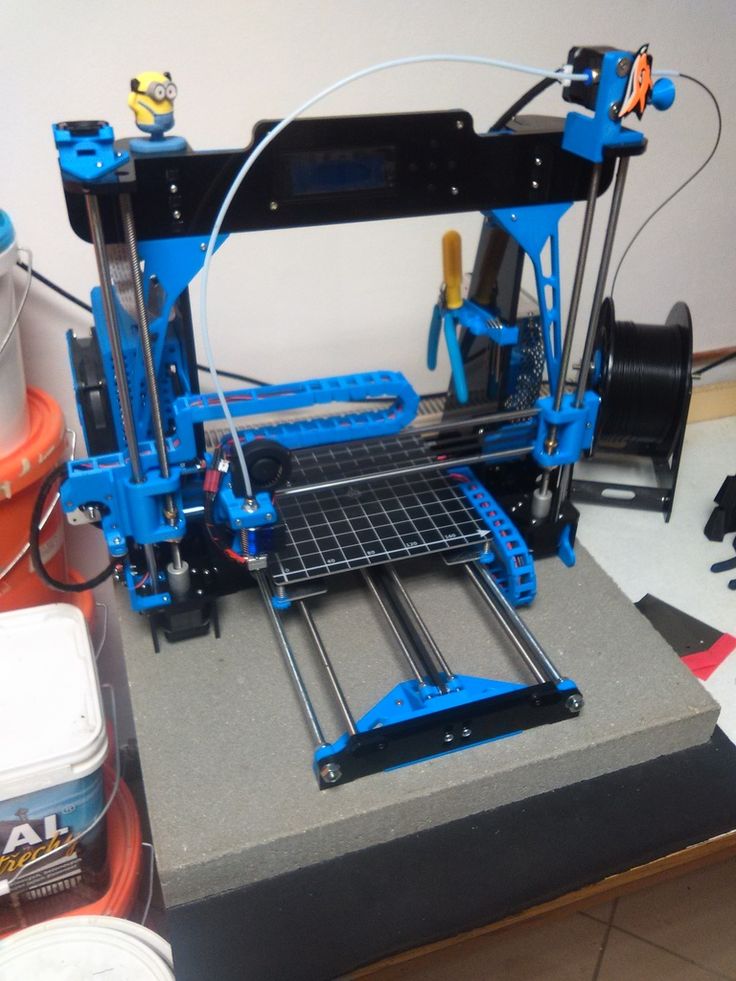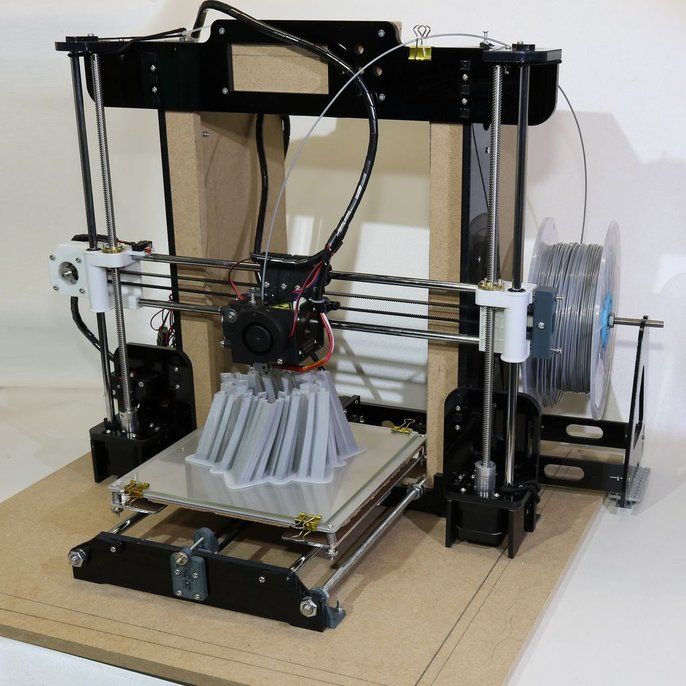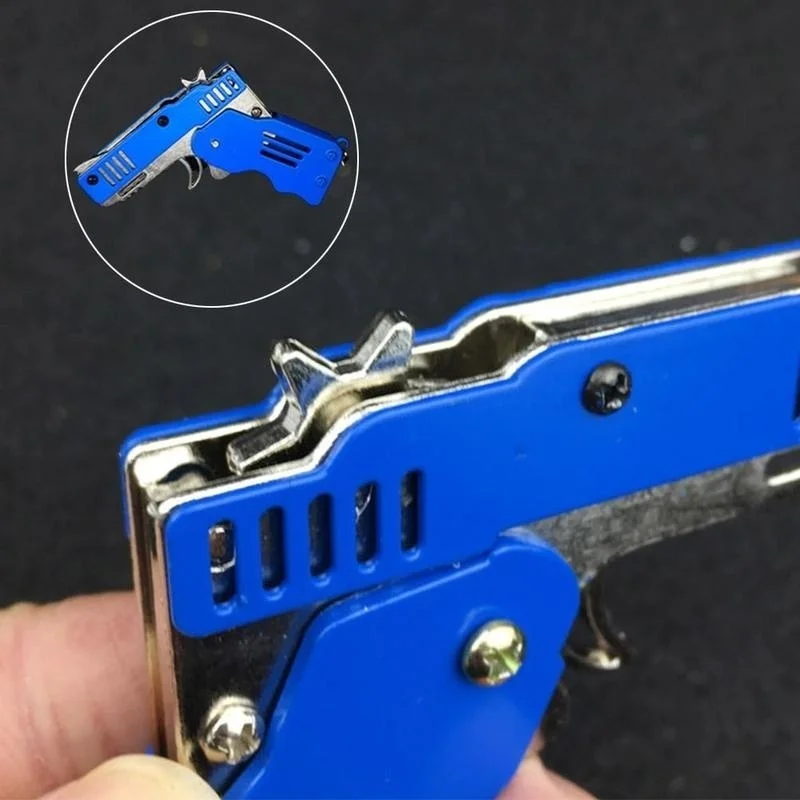Carbon fiber 3d printers
Ultimate Materials Guide - 3D Printing with Carbon Fiber
Overview
Carbon fiber filaments use tiny fibers that are infused into a base material to improve the properties of that material. Several popular filaments can be bought with carbon fiber fill including PLA, PETG, Nylon, ABS, and Polycarbonate. These fibers are extremely strong and cause the filament to increase in strength and stiffness. This also means that the 3D printed parts will be much lighter and more dimensionally stable, as the fibers will help prevent shrinking of the part as it cools. Print settings, such as printing temperature, speed, bed adhesion, and extrusion rates will be very similar to the normal settings used for the base material that the fibers were added to (for example, the stock PLA settings would be a good starting point for PLA-based carbon fiber filament). However, due to the added fibers, these specialty materials are more likely to clog and can require special hardware to avoid damaging the printer.
- Increased strength and stiffness
- Very good dimensional stability
- Lightweight
- Abrasive and requires hardened steel nozzle
- Increased oozing while printing
- Increased brittleness of filament
- Higher tendency to clog
Hardware Requirements
Carbon fiber filled filaments have the same requirements as the base filament it is infused with. The hardware requirements listed below are for carbon fiber filled PLA filament.
Bed
Temperature: 45-60 °C
Heated Bed Optional
Enclosure not required
Build Surface
Painter’s tape
PEI
Glass plate
Glue stick
Extruder
Temperature: 200-230 °C
Requires Wear Resistant Hardened Steel Nozzle
Cooling
Part Cooling Fan Required
Best Practices
These tips will help you reduce the chances of common 3D printing issues associated with carbon fiber filled filaments such as clogging and the nozzle wearing down.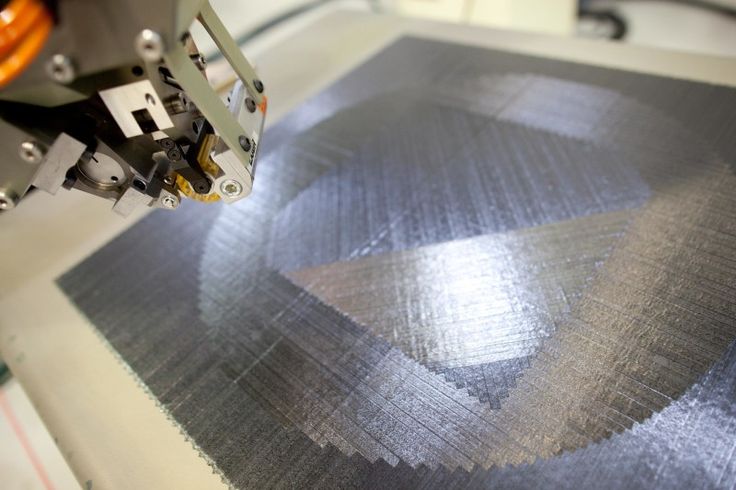
Upgrade to Hardened Steel Nozzle
The carbon fibers in these filaments can be extremely abrasive. In many cases, the carbon fibers are actually harder than the brass nozzles used on most 3D printers, so trying to print these materials with a stock nozzle could damage the printer. Instead, plan on upgrading to a hardened steel hotend. These hotends can resist the added wear from the fibers, however, they also tend to be less thermally conductive than their brass counterparts. You may need to set the extruder temperature as much as 40° hotter than usual, which also helps with reducing the chance of a clog. Reducing the fan speed can also be useful to prevent thermal issues with the steel nozzles.
Adjust Retraction Settings to Avoid Clogs
Since the filament is full of small fibers that won’t melt, the chances of a nozzle clog are greatly increased over the base material. We recommend reducing your retraction distance or disabling retractions all together, as the retractions can increase the change of a buildup of fibers inside the extruder assembly. If you want to minimize the number of retractions that are performed, Simplify3D includes a very useful setting that will actually adjust the travel path of the extruder to stay within the interior of the part so that no retraction is needed. You can enable this setting by turning on the “avoid crossing outline for travel movements” option on the Advanced tab of your process settings.
If you want to minimize the number of retractions that are performed, Simplify3D includes a very useful setting that will actually adjust the travel path of the extruder to stay within the interior of the part so that no retraction is needed. You can enable this setting by turning on the “avoid crossing outline for travel movements” option on the Advanced tab of your process settings.
Reduce the Print Speed for Consistent Results
Using a slower print speed can be a big benefit for carbon fiber filled materials, as the extruder will be under less stress, and has a higher chance of pushing small clogs through the nozzle if they start to form. Try reducing your print speed by 25-50% to see what value works best for your specific brand of plastic. If you still experience clogs after making these changes, we have an entire section on our Print Quality Guide dedicated to this issue that includes several other tips to help troubleshoot this issue: How to Fix a Clogged Extruder.
Use a Guided Filament Path
Carbon fiber filled filaments tend to be far more brittle than the base filament and can snap easily if they are forced through tight corners, or rub on sharp edges of the printer frame. Make sure that the entire filament path, from the spool to the nozzle, consists only of gentle curves, with no sharp turns or areas where the filament will be dragged along a surface. Using a PTFE guiding tube, or ensuring that the filament spool is in a strategic place with regards to the extruder can help reduce the chance of filament breakage.
Pro-Tips
- Nozzles with larger diameters (0.5mm or more) are far less likely to clog, as the fibers will fit through the larger nozzle hole much more easily.
- If the nozzle seems to clog right away after printing the first layer or two, try increasing the first layer height. If the nozzle is too close to the bed, this will create increased back-pressure while printing these layers that can cause the fibers to build up and clog the nozzle temporarily.

Get Started with Carbon Fiber Filled
There are many unique applications for this speciality material. We’ve compiled a few tips below to help you get started.
Common Applications
- R/C Vehicles
- Functional prototypes
- Decorative pieces
- Lightweight Props
Sample Projects
- F16
- Formula 1 Car
- Quadcopter
- Darth Revan’s Mask
Popular Brands
- Proto-Pasta Carbon Fiber Reinforced PLA
- Matterhackers NylonX
- 3DXTECH
The Carbon Fiber 3D Printer Buyer's Guide 2022
Carbon fiber is strong, stiff, light and increasingly affordable to 3D print for companies, engineers and designers. Carbon fiber is an effective replacement for many metal parts in industry, with 3D printing offering faster prototyping, functional testing, and end user part carbon fiber production.
So, for any decision makers looking to implement carbon fiber 3D printing into their workflow, we’ve summarized all your carbon fiber 3D printer options under $10,000.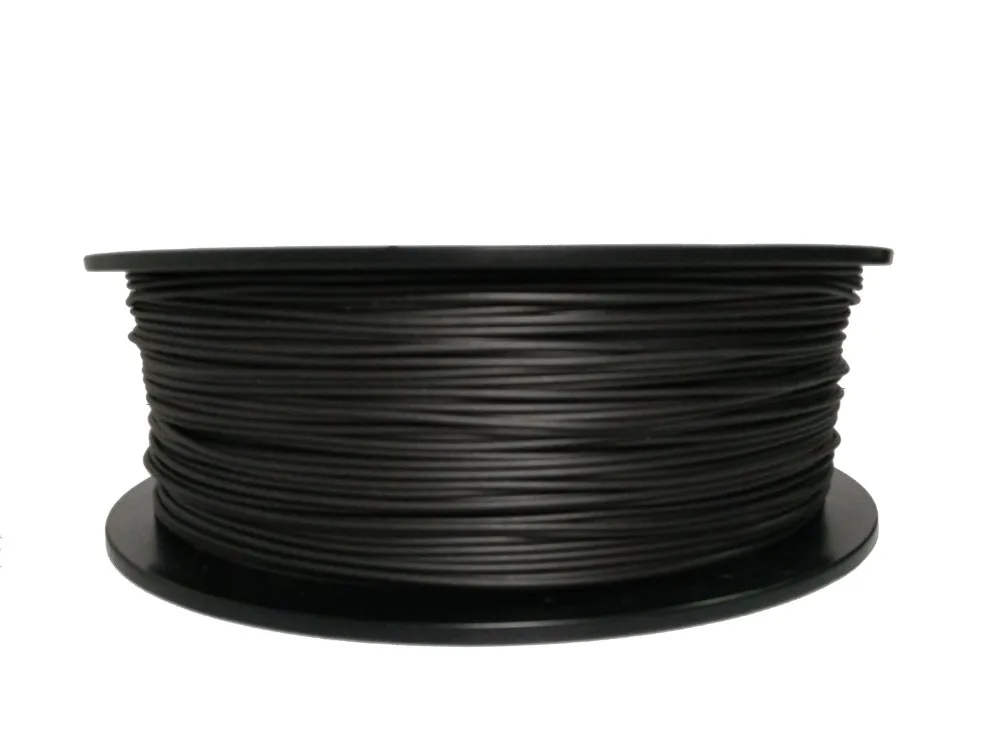
Chopped carbon fiber filaments are the main filaments used for standard FDM 3D printing.
Most of the lower cost options on this list print chopped carbon fiber filaments, which are tiny sub-millimeter carbon fibers mixed with a standard thermoplastic filament, such as Nylon, ABS, or PLA.
They make the filaments stronger, stiffer and more heat resistant, and print in mostly the same way as the standard filaments, just at higher temperatures and requiring an abrasive-resistant nozzle.
Continuous Carbon Fiber 3D printersContinuous carbon fibers are long (unchopped and continuous) strands that are laid on top of the original chopped carbon fiber “shell” or “matrix”.
These continuous lengths of carbon fiber are deposited by a second extruder, creating even tougher parts than can absorb tough impacts and distribute heavy loads.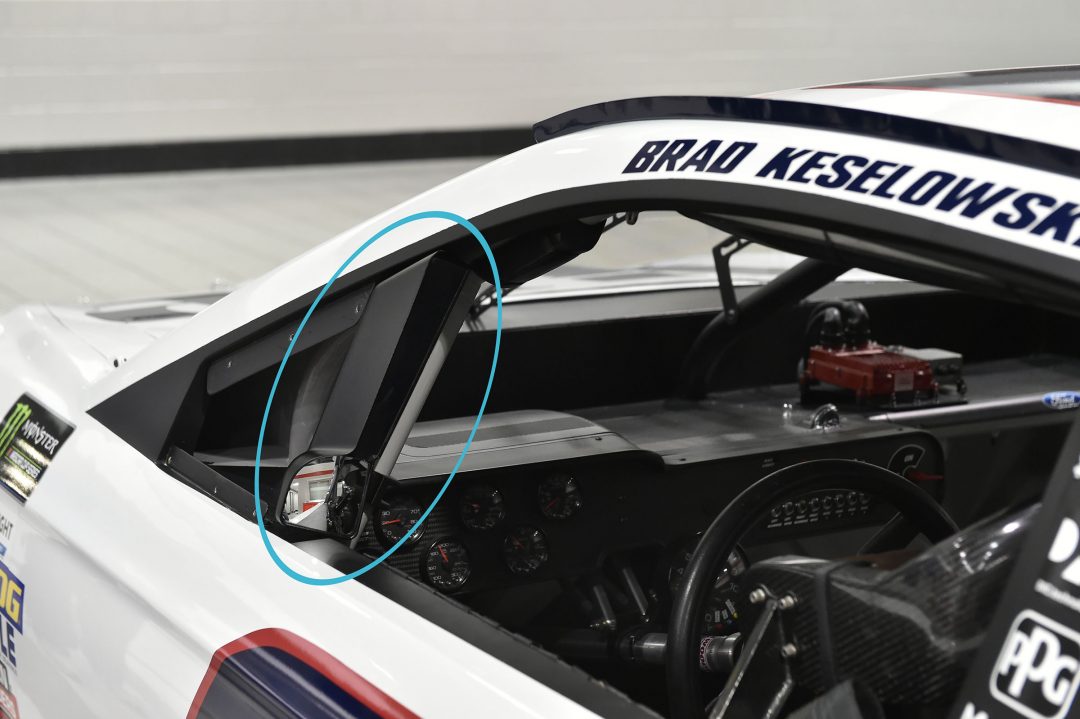
Tips for 3D printing carbon fiber:
- Hardened steel or ruby nozzle: these nozzles better resist the abrasiveness of carbon fiber filaments.
- Print at a higher temperature, as hardened nozzles are less thermally conductive: generally 260°C+.
- Larger nozzle size: se a slightly larger 0.5-0.6mm nozzle rather than a 0.4mm.
- Print slower than you would print standard filaments.
Pulse XE — low cost carbon fiber 3D printer option
- Price: $999 — Available on Matterhackers here
- Build volume: 250 x 210 x 215 mm
Made by trusted 3D printer retailer Matterhackers and inspired from the original Prusa design, the Pulse XE is a low cost carbon fiber 3D printer especially designed to print Matterhackers’ NylonX filament.
NylonX is a mix of nylon with carbon fibers, with the Pulse XE able to print a range of other carbon fiber filaments thanks to its fitted Bondtech BMG extruder and E3D V6 hot end, along with your choice of either a hardened steel nozzle or ruby-tipped nozzle if you choose to upgrade.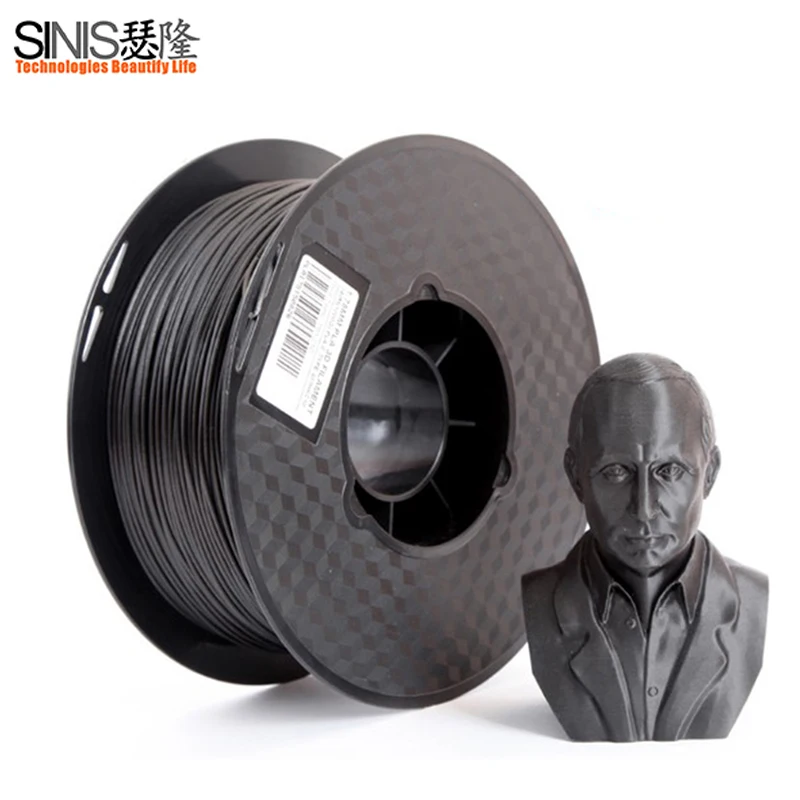 It’s marketed as a general advanced materials 3D printer capable of printing a variety of other tougher composite and abrasive filaments.
It’s marketed as a general advanced materials 3D printer capable of printing a variety of other tougher composite and abrasive filaments.
The Pulse XE offers a far cheaper way of 3D printing carbon fiber, but you’ll likely need the enclosure kit (another $300) to avoid warping as maintaining temperature is more difficult in an open air 3D printer than an enclosed 3D printer.
- We also have a ranking of the best enclosed 3D printers.
Taking after the Prusa, it’s a reliable workhorse 3D printer that can also print standard filaments like metal filled filaments, PETG, and many advanced and abrasive filaments and composites. It prints up to 60mm/s (but be wary with tougher materials and slow down if you face issues), with resolutions of up to 20 microns possible.
You can mix and match and upgrade as you see fit based on your needs and preferences, including a hi-res LCD screen, upgrading to a 32-bit board, ruby nozzle, and a host of other improvements — it’s a very versatile carbon 3D printer that’ll save you some money compared to other 3D printers for carbon fiber if you’re on a tight budget.
Raise3D E2
- Price: $3,499 — Available on Matterhackers here / Available on Dynamism here
- Build volume: 330 x 240 x 240 mm
Raise3D make excellent professional 3D printers capable of large-scale 3D printing and high quality prototyping, and we could have also picked the Raise3D Pro2 Plus as an excellent carbon fiber 3D printer option for larger carbon fiber prototypes.
The Raise3D E2 is an enclosed 3D printer featuring IDEX technologies with Mirror and Duplication modes for efficient and effective dual extrusion 3D printing that still offers good print volumes. It’s fully enclosed, with a controlled heated chamber ideal for printing small to medium-sized carbon fiber prototypes.
- And if you’re looking to print larger (up to 600mm tall) prototypes instead, go for the Raise3D Pro2 Plus.
The Raise3D E2 comes with a host of features that make your workflow easier and more efficient, including filament run out sensors, print resume features in the event of a power loss, and a full-color touchscreen with all analytics viewable during printing. The printer also comes with a flexible build plate that makes removing parts easier without damaging them — ideal for quickly removing carbon fiber prototypes to test them and iterate.
The printer also comes with a flexible build plate that makes removing parts easier without damaging them — ideal for quickly removing carbon fiber prototypes to test them and iterate.
The Raise3D E2 CF is also set for release soon, further adding to the carbon fiber printing potential the E2 offers.
It’s not a specialized carbon fiber 3D printer, but it can handle carbon fiber filaments without issue. Beyond just carbon fiber 3D printing, the E2 also comfortably prints glass fiber infused filaments, PP, PC, Nylon, metal filled filaments, ABS, and more.
Fusion3 F410 — large carbon fiber 3D printer
- Carbon fiber 3D printer price: $4,999
- Build volume: 355 x 355 x 315 mm
Offering professional quality and industrial volume at desktop prices, the Fusion3 F410 is one of the top options around if you’re looking for a 3D printer for carbon fiber.
It’s fast — 250mm/s print speed — offers up to 20-micron layer resolution, and is ideal for both businesses and classrooms for 3D printing either larger prototypes or many smaller parts simultaneously for a class.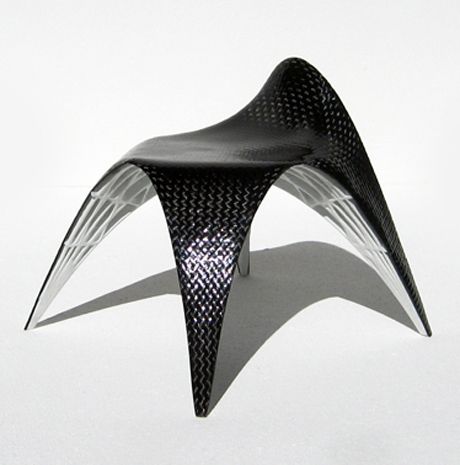 You can add HEPA air filters to keep your print environment more pleasant and prevent any harmful gases being inhaled during the print process.
You can add HEPA air filters to keep your print environment more pleasant and prevent any harmful gases being inhaled during the print process.
For 3D carbon fiber printing, the F410’s excellent build volume, large heated bed and enclosed print area make it ideal for high temperature filament printing. It’s been tried and tested with a number of different carbon fiber reinforced filaments, including 3DXTech and various other brands and composites, proving every time to work well. Almost all carbon fiber filaments should be compatible with it, owing to its 300°C maximum nozzle temperature — but you can read the full list of compatible filaments here.
The F410 comes with a hardened steel nozzle that can handle the abrasiveness of carbon fiber and other trickier filaments, and is an ideal carbon fiber 3D printer for under $5,000.
Makerbot Method and Method X Carbon Fiber Edition
- Price: $5,499 — Available on Matterhackers here / Available on Dynamism here
- Build volume: 190 x 190 x 196 mm
Makerbot’s specialized carbon fiber printer, the Method (and Method X) Carbon Fiber Edition, is designed to save businesses costs prototyping and creating, improve productivity, and encourage faster innovation.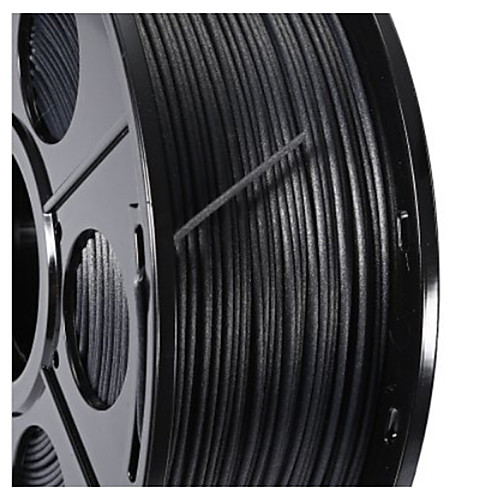
The Method Carbon Fiber prints carbon fiber-reinforced Nylon as well as a host of other engineering-grade composite filaments. Makerbot themselves offer two carbon fiber Nylon blends:
- Nylon 6/66: offering fantastic strength to weight ratio and good heat resistance.
- Nylon 12: offering better moisture resistance, as well as a simpler and more reliable 3D printing experience overall.
Both Nylon carbon fiber 3D printer materials work well in structural applications and in general tough part production, with Makerbot championing the materials for replacing metal parts.
In addition to these carbon fiber nylon filaments, Makerbot offer SR-30 soluble filaments that can be dissolved for flawless surface finishes on parts, and a range of other high-quality materials. You can also use other materials as the Method is an open platform for other advanced filaments.
The Method features a 60°C heated chamber, and if you want to go higher, you can instead buy the Makerbot Method X which can reach 110°C to print a wider range of composite materials. You get a dual extruder for multi-material or multi-color 3D printing, and up to 20-micron resolution and 0.2mm dimensional accuracy.
You get a dual extruder for multi-material or multi-color 3D printing, and up to 20-micron resolution and 0.2mm dimensional accuracy.
Some may find the smaller than average build volume an issue, especially as if you are planning on using the dual extruder the X-axis maxes out at 152mm rather than 190mm. However, for small and medium part production the Method Carbon Fiber 3D printer is a great overall option, packed with features to maximize prototyping efficiency including a flexible steel build plate for adhesion and quick part removal, a 5-inch full color touchscreen for efficient printer interaction, and a camera for remote print monitoring.
Ultimaker S5
- Price: $5,995 — Available on Matterhackers here / Available on Dynamism here
- Build volume: 330 x 240 x 300 mm
A favorite among designers, prototypers and companies worldwide, the Ultimaker S5 marries fantastic precision and part quality, with the robustness and reliability of a top FDM 3D printer.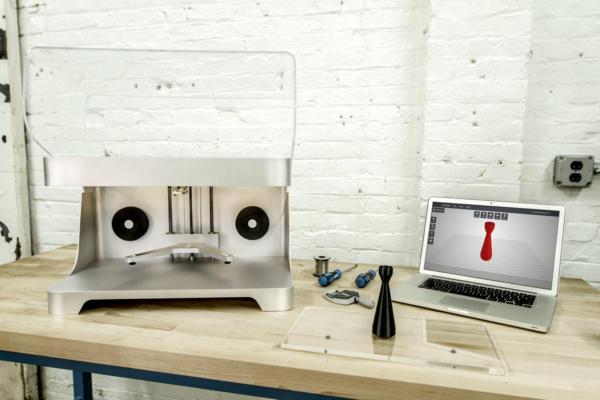 Switching to the CC print core for 3D printing carbon fiber on the Ultimaker S5.
Switching to the CC print core for 3D printing carbon fiber on the Ultimaker S5.
The S5 isn’t as standard a carbon fiber 3D printer, but can be upgraded by buying Ultimaker’s CC Red 0.6 print core, which seamlessly slips into place to start printing abrasive and advanced filaments like carbon fiber. The CC Red works on both the S3 and S5, but not for the Ultimaker 3.
The upgraded print core transforms the Ultimaker S5, giving you all the S5’s precision and reliability in creating fantastic prototypes, as well as the ability to print carbon fiber composites. You can print with dual extruders without issue, and the S5 comes with a 7-inch full color touchscreen for easy operation and print monitoring, and a removable glass print bed for good carbon fiber part adhesion and easy part removal.
XYZprinting PartPro300 XT
- Price: $5,500 — Available on Dynamism here
- Build volume: 295 x 300 x 300 mm
XYZprinting have expanded far beyond their original horizons when they producing some of the best selling cheap 3D printers around — they now sell SLS 3D printers, a handheld 3D scanner, and full color 3D printers.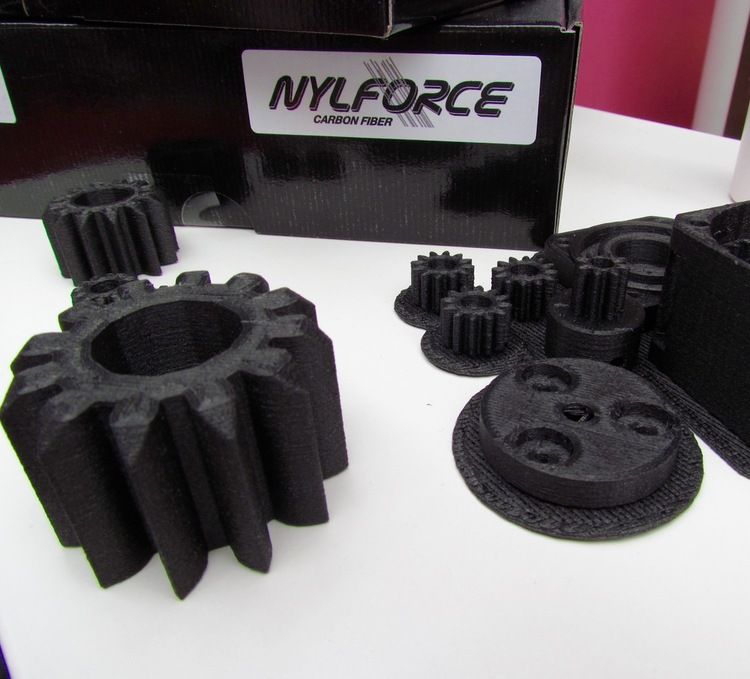
The PartPro300 XT is XYZprinting’s venture into making a commercial 3D printer capable of consistently printing advanced filaments like carbon fiber. Its dual extruders are fitted with hardened steel nozzles that can handle carbon fiber’s abrasiveness, and prints at a very fast 300mm/s for the rapid prototyping of large parts in record time.
Like most carbon fiber 3D printers the PartPro300 XT has a regulated heated chamber and enclosure for high quality part production, preventing temperature deviations that could cause imperfections in the prototype. The PartPro300’s filament humidity system prevents conditions from affecting filament quality, ensuring parts are as strong and offer the best surface area possible. Overall, it’s a powerful carbon fiber 3D printer that can print a range of other engineering-grade filaments too without issue.
Markforged Onyx One — for high quality carbon fiber 3D printing
- Price: $3,499
- Build volume: 320 x 132 x 154 mm
Markforged pioneered composite and high quality carbon fiber 3D printing with their professional FDM printer range, before expanding into metal 3D printers with their Metal X 3D printer.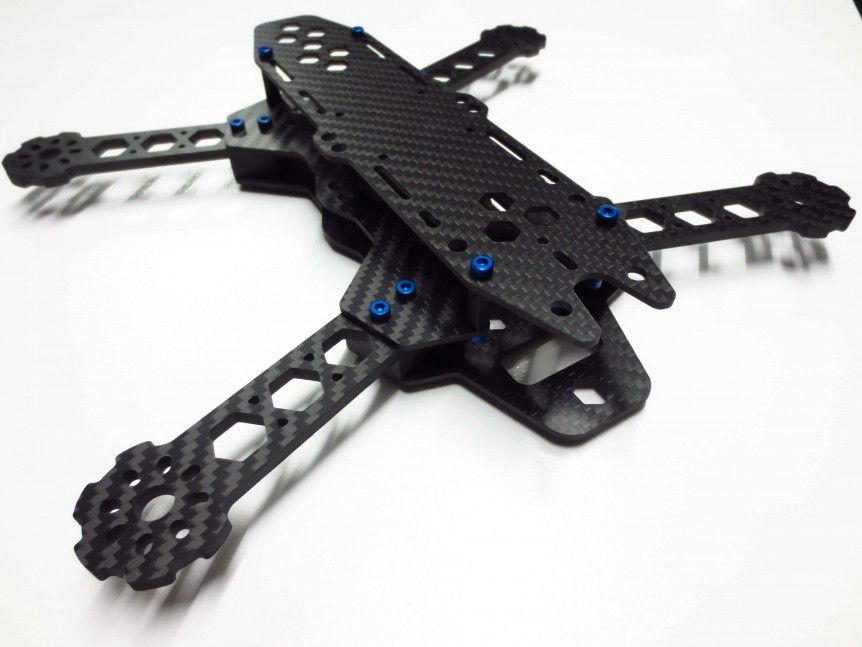
For designers and engineers looking to print carbon fiber prototypes but without the $10,000+ for the Mark Two, the Onyx One is an ideal continuous carbon fiber 3D printer.
The Onyx One prints with Markforged’s specialized Onyx filament, offering great surface finishes and precision.
Onyx Filament
Specially designed for Markforged’s carbon fiber printers, Onyx is carbon fiber filled Nylon offering high strength, chemical resistance and excellent overall toughness. It can also be reinforced with continuous fibers as a continuous carbon fiber 3D printer filament for even better aluminum-level strength.
Desktop Metal Fiber HT & LT — Professional Continuous Carbon Fiber 3D Printer
- Price: $3,495 per year — request a quote here
- Build volume: 310 x 240 x 270 mm
Combining the exceptional performance of continuous carbon fiber with FDM 3D printing, Desktop Metal say their Fiber 3D printers produce parts stronger than steel, lighter than aluminum, and capable of operating in up to 250°C temperatures.
Desktop Metal use a process called Micro Automated Fiber Placement to apply continuous carbon fiber (or fiberglass) tape along critical load paths using the second extruder, while printing carbon fiber nylon filaments on the first. This creates denser, reinforced parts with excellent strength and low weight.
The Fiber system uses two print heads: one for either continuous carbon fiber (or fiberglass) tape, and one to deposit the carbon-fiber reinforced filament to make up the “shell” or “matrix” of the part. However, if you’re looking for versatility you can switch the materials and instead print with PEEK, PEKK, or PA6 Nylon.
The Fiber carbon fiber additive manufacturing system comes in two options: the Fiber HT, and Fiber LT, a more basic version. The main difference is the Fiber HT can reach high enough temperatures to 3D print PEEK and PEKK, whereas the LT edition prints with either carbon fiber or Nylon PA6.
- We also have a buyer’s guide for PEEK 3D printers.

Desktop Metal’s innovative business model lets you rent their industrial carbon fiber 3D printers for a yearly fee, rather than shouldering the entire cost upfront. This brings professional 3D printing into range for many more smaller companies looking to prototype or produce parts on-demand, making high-quality continuous carbon fiber 3D printing more accessible than ever.
Everything you need to know about 3D printing carbon fiber
First produced by Joseph Swan in 1860, carbon fiber is made up of a long chain of carbon atoms bonded together. The chain is typically 5 to 10 micrometers in diameter and varies in length depending on the application. Over the years, carbon fiber has become popular in many sectors because it offers interesting properties, including high stiffness, high tensile strength, light weight, high chemical resistance, high temperature resistance, and low thermal expansion. Pure carbon fiber is actually five times stronger than steel and twice as stiff but lighter. As you can imagine, these characteristics make carbon fibers suitable for applications in sectors such as aerospace, automotive, military or civil engineering.
As you can imagine, these characteristics make carbon fibers suitable for applications in sectors such as aerospace, automotive, military or civil engineering.
As some of you may already know, carbon fibers are rarely used on their own. They are usually combined with other materials to form what we call a composite material - in this particular case, these are materials reinforced with carbon fiber. These composites are made from a matrix material, usually a polymer, although it is possible to use non-polymer materials such as ceramics to which carbon fibers are added. The main advantage is that you end up with a stronger but lighter plastic with a higher level of stiffness.
The body of this bike frame is made of carbon fiber | Source: Arevo
Traditionally, carbon fiber composites have been used for structural design, where added weight results in increased life cycle costs or unsatisfactory performance. Carbon fiber composites can be used to create many products such as bicycle frames, aircraft fenders, propeller blades, automotive components, etc.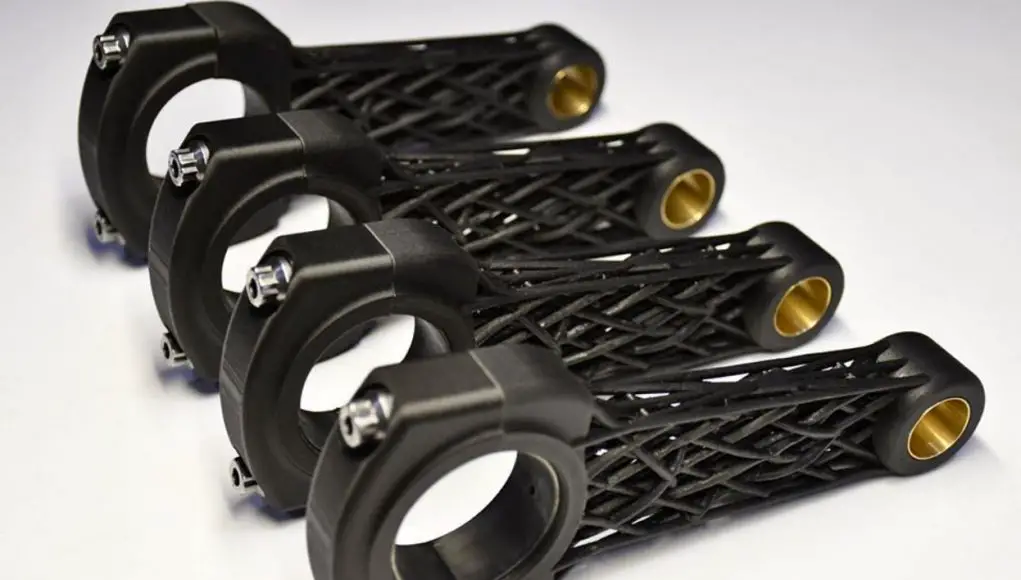 As you can imagine, given the many benefits of carbon fiber, it is already being used by more than just traditional manufacturing systems. In recent years, more and more 3D printing companies are offering carbon fiber reinforced materials or technologies. They are designed to work with this composite to provide better performance. So how is carbon fiber being used in additive manufacturing?
As you can imagine, given the many benefits of carbon fiber, it is already being used by more than just traditional manufacturing systems. In recent years, more and more 3D printing companies are offering carbon fiber reinforced materials or technologies. They are designed to work with this composite to provide better performance. So how is carbon fiber being used in additive manufacturing?
3D Printing Applications
In its 3D Printing Composites 2020 - 2030 report, IDTechEx reports that the global market for 3D printing composites will reach $1.7 billion by 2030. This figure also includes other composite materials, such as materials reinforced with fiberglass or plastic. However, this trend clearly demonstrates that the 3D printing industry is increasingly using all composites, including carbon, in their manufacturing activities. There are essentially two ways to use carbon fiber in 3D printing, the first is carbon fiber reinforced filaments and the second is continuous carbon fiber reinforcement.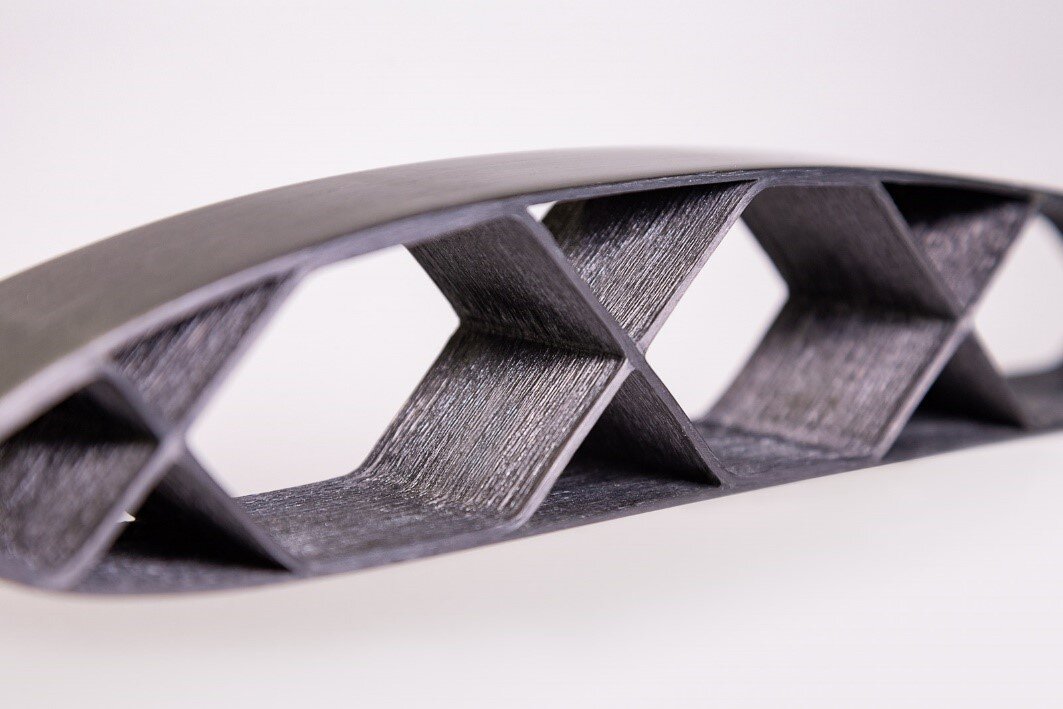
Carbon fiber filament
Carbon fiber filament uses short carbon fibers composed of segments less than one millimeter long, which are mixed with a thermoplastic known as a base material. There are a number of popular filaments available with carbon fiber fill, including PLA, PETG, nylon, ABS, and polycarbonate. These fibers, being extremely strong, cause an increase in the strength and stiffness of the thread, and also reduce its overall weight. The requirements for 3D printing carbon fiber filaments should be the same as for the base material they were added to. The main difference is that fibers can clog 3D printer nozzles, so experts recommend using a hardened steel nozzle. In addition, when a certain threshold of fibers is exceeded, the part printed on a 3D printer loses its surface quality.
Carbon fiber segments embedded in thread for reinforcement | Source: Markforged
Some companies have developed carbon fiber fibers for more technical applications.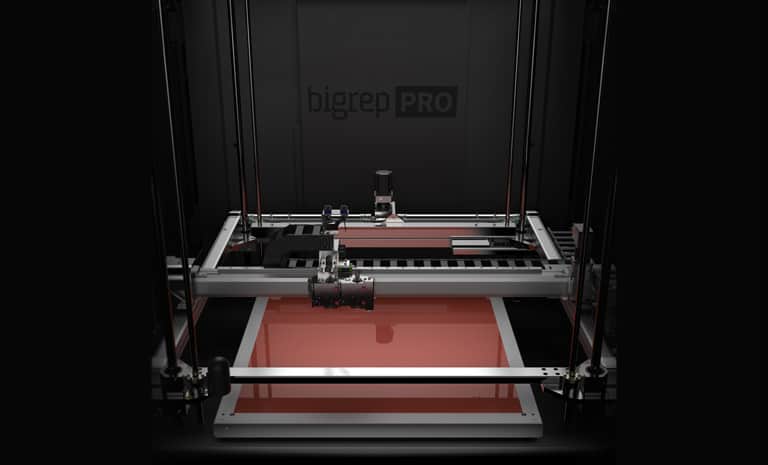 These yarns use high performance polymers (HPPs) such as PEEK or PEKK as the base material. Consequently, they not only offer the benefits of HPPs such as durability and high mechanical and chemical performance, but also an improved strength to weight ratio. Print settings need to be adjusted as HPPs require extruders that can heat up to 400°C and systems that have heated chambers and build plates. Some of the carbon fiber filament manufacturers are: Roboze, 3DXTech, ColorFabb, Markforged, Kimya, Intamsys, Zortrax, etc.
These yarns use high performance polymers (HPPs) such as PEEK or PEKK as the base material. Consequently, they not only offer the benefits of HPPs such as durability and high mechanical and chemical performance, but also an improved strength to weight ratio. Print settings need to be adjusted as HPPs require extruders that can heat up to 400°C and systems that have heated chambers and build plates. Some of the carbon fiber filament manufacturers are: Roboze, 3DXTech, ColorFabb, Markforged, Kimya, Intamsys, Zortrax, etc.
Continuous carbon fiber reinforcement
Carbon fiber thread is definitely stronger than thread that has not been reinforced. However, to get an even stronger part, another method called continuous carbon fiber reinforcement can be used. Since carbon fiber is not cut into smaller pieces, it retains much more strength. In fact, continuous printing on carbon fiber is strong enough to be half the weight of aluminium. 3D printer manufacturers claim that they can replace metal 3D printing for some applications. And the main advantage is that it is cheaper than metal. Finally, by placing carbon fiber according to DfAM techniques, it is possible to increase the strength of the part while reducing material consumption.
And the main advantage is that it is cheaper than metal. Finally, by placing carbon fiber according to DfAM techniques, it is possible to increase the strength of the part while reducing material consumption.
Using DfAM methods, it is possible to strengthen a part using carbon fiber | Source: Anisoprint
There are several players on the market that offer technologies that can continuously print carbon fibers. They can be divided into two main types, depending on when the carbon fiber is added (it can be added before the 3D printing process or during). When added earlier, continuous fiber 3D printing is known as backing prepreg, while when added during extrusion, it is called co-extrusion. In the prepeg technique, you also get a composite thread (or tape), but the carbon fibers have not been cut, instead they have been impregnated with a polymer through a pultrusion process.
Members offering continuous fiber 3D printing include Markforged, Anisoprint, CEAD, etc.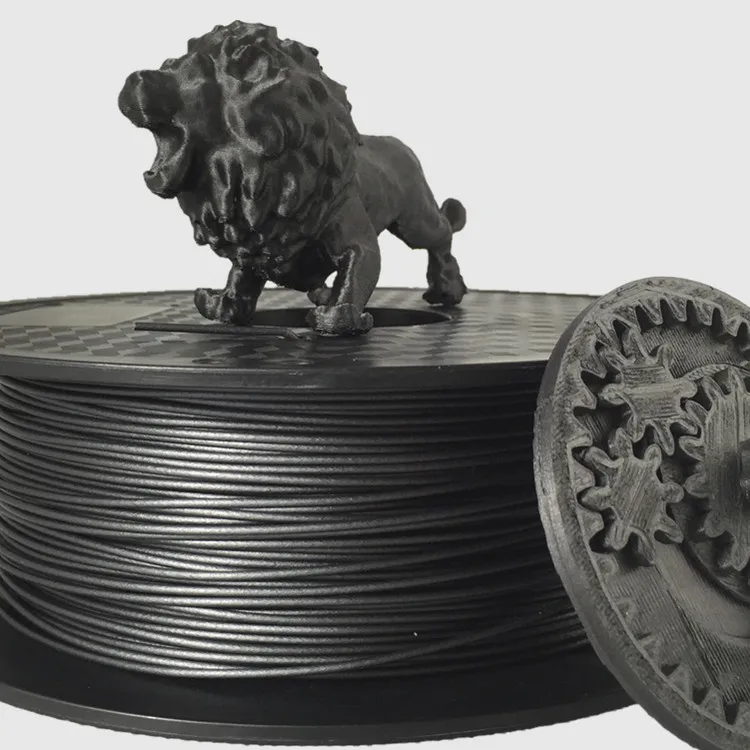 More recently, Desktop Metal has also joined the race with a new system called Fiber. Fiber uses Micro Automated Fiber Placement (µAFP). In addition, 9T Labs has developed additive synthesis technology (AFT) to mass-produce carbon composites at a lower cost.
More recently, Desktop Metal has also joined the race with a new system called Fiber. Fiber uses Micro Automated Fiber Placement (µAFP). In addition, 9T Labs has developed additive synthesis technology (AFT) to mass-produce carbon composites at a lower cost.
Carbon 3D printing: other technologies
A departure from the better known extrusion process, an interesting technology is the patented AREVO process, based on directed energy deposition technology, in which a laser is used to heat filament and carbon fiber simultaneously as a roller presses them together. Impossible Objects and EnvisionTEC have also added carbon fiber 3D printing systems to their machines, but the technology is slightly different. They weave sheets of carbon fiber using a lamination process. Last but not least, Continuous Composites uses a hybrid technology where a strand of fiber is impregnated with resin and then cured with UV light, similar to SLA 3D printing.
This part demonstrates how continuous carbon fiber 3D printing can increase the strength of a plastic part | Source: Markforged
Source
carbon fiber, composite materials, 3D printing, carbon fiber composites.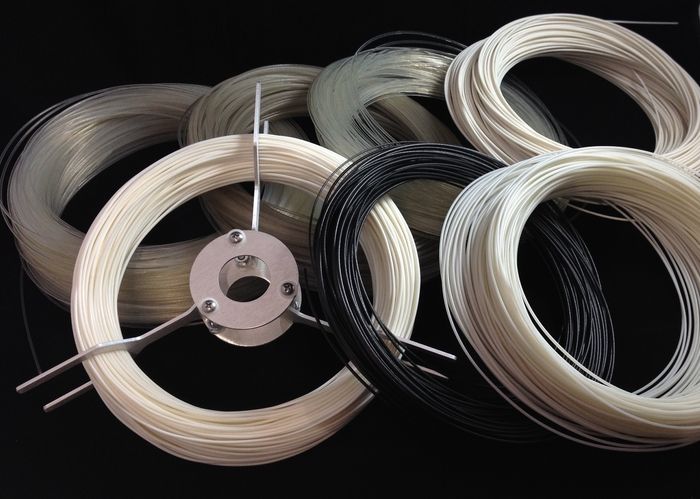 additive manufacturing, PLA, ABS, polycarbonate, nylon, 3D printing filament, 3D printer, Anisoprint, additive synthesis, 9T Labs, carbon 3d printing, 3D SLA
additive manufacturing, PLA, ABS, polycarbonate, nylon, 3D printing filament, 3D printer, Anisoprint, additive synthesis, 9T Labs, carbon 3d printing, 3D SLA
ALL YOU NEED TO KNOW ABOUT CARBON FIBER 3D PRINTING
ALL YOU NEED TO KNOW ABOUT CARBON FIBER 3D PRINTING
Before you get started with carbon fiber 3D printing, here are some basic information we've put together just for you. Read on and learn about the advantages, disadvantages, history and applications of carbon fiber 3D printing.
CARBON FIBER AS A MATERIAL
Carbon fiber comes in many shapes. Can be used together with resin and molds; it can be combined with polymers in composite form. It has been used for everything from light bulbs to high-performance racing cars - and has even been tested on rockets flying to Mars. Despite its wide range of applications, the most obvious advantage of carbon fiber is its high strength to weight ratio.
History
Carbon fibers were first discovered by Thomas Edison in the late 19th century for use as the filament in early light bulbs.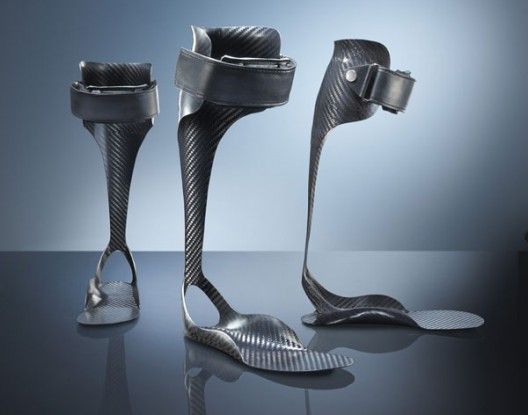 In the late 1950s, the Union Carbide Corporation first recognized the strength advantages that could be achieved with additional processing methods. Over the next 50 years, manufacturing technology advanced further, and today carbon fiber has become a ubiquitous high performance product, from racing cars to airplanes.
In the late 1950s, the Union Carbide Corporation first recognized the strength advantages that could be achieved with additional processing methods. Over the next 50 years, manufacturing technology advanced further, and today carbon fiber has become a ubiquitous high performance product, from racing cars to airplanes.
Production
Generally, all carbon fiber is produced using a six step process. PAN (polyacrylonitrile) is obtained as a by-product of petroleum and is generally the material of choice for carbon fiber production. PAN is mixed with other ingredients and converted into fibers up to 10% of the thickness of a human hair. The fibers are then oxidized to stabilize the bond before undergoing carbonization, during which the fibers are heated to 1000°C to remove impurities. The surface is then treated to improve adhesion before the final sizing step, in which the fibers are coated and spun into threads of varying thicknesses.
These yarns can then be further processed in a variety of ways, depending on the end use. The yarn can be woven into sheets or, in the case of 3D printing, it can be cut into short fibers, mixed with a base polymer, and then extruded into a filament for a 3D printer.
The yarn can be woven into sheets or, in the case of 3D printing, it can be cut into short fibers, mixed with a base polymer, and then extruded into a filament for a 3D printer.
Pre-cut carbon fiber for 3D printing resin
3D PRINTING WITH CARBON FIBER
3D printing with carbon fiber means choosing the right composites. The base polymer can determine the final properties of the part, as well as considerations that need to be taken into account when 3D printing. Below you will see various carbon fiber 3D printer composites and some of their strengths and weaknesses.
Nylon Carbon Fiber PA CF
Nylon Carbon Fiber is one of the most popular composites when it comes to 3D printer. This is because nylon already has desirable properties for engineering applications. It has a high degree of strength and high temperature resistance. It also has a high degree of strength that balances out the brittleness of the carbon fiber itself.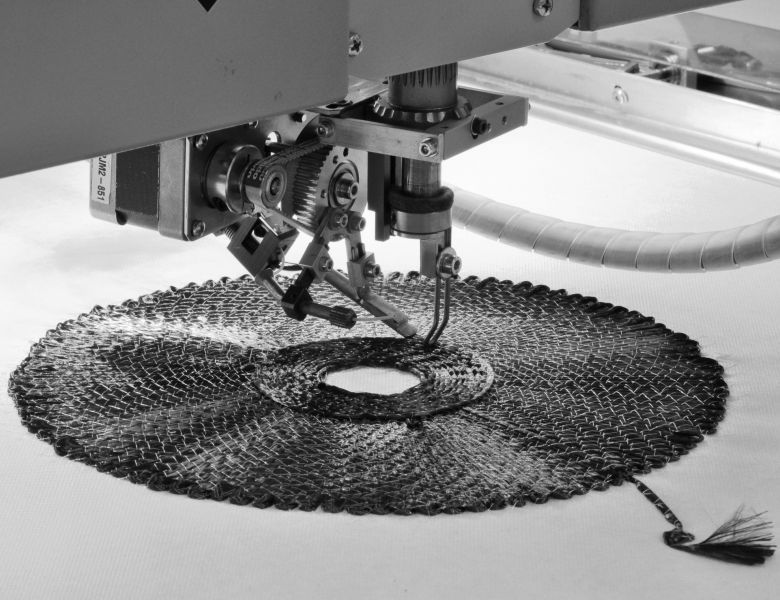 A potential disadvantage of nylon is its hygroscopicity, which makes it even more important to have a protected environment for nylon carbon fiber spools such as a mylar bag and a sealed material compartment.
A potential disadvantage of nylon is its hygroscopicity, which makes it even more important to have a protected environment for nylon carbon fiber spools such as a mylar bag and a sealed material compartment.
Carbon fiber ABS. ABS CF
ABS is a well known material due to its wide application in injection molded consumer products. In carbon fiber 3D printing, ABS works as a solid base polymer due to its properties. ABS carbon fiber also tends to have a very nice surface finish, which is almost always welcome whether the application is a prototype or part of a final product. One disadvantage of this connection is that it requires a heated 3D printer chamber, which is usually only found in higher end 3D printers.
Carbon fiber PETG CF
PETG is a material known for its resistance to chemicals and moisture in general, making it a good composite resin for 3D printers under exposure conditions.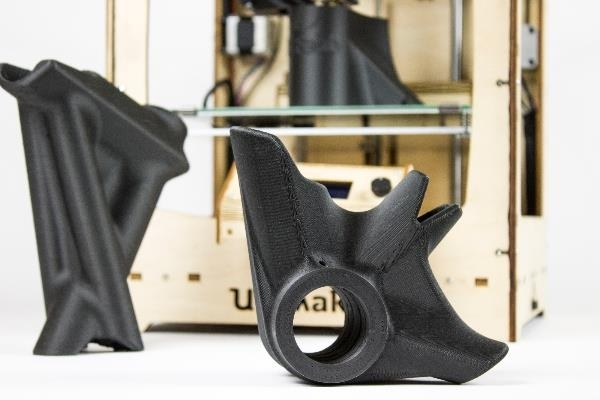 Examples of such applications include parts that may come into contact with coolants or simply products that will be used outdoors in rainy climates.
Examples of such applications include parts that may come into contact with coolants or simply products that will be used outdoors in rainy climates.
Carbon fiber PEEK CF
PEEK is one of the most efficient thermoplastics ever invented.
PEEK-CF thread includes carbon fibers for added strength. Chopped carbon fiber gives printed parts high rigidity and dimensional stability. This material provides long term performance up to 240°C including exceptional chemical resistance. These properties make it particularly suitable for metal replacement in critical end-use applications such as oil and gas, aerospace and automotive. The flammability of PEEK-CF is low, as well as the emission of smoke and toxic gases.
Due to its high mechanical properties, PEEK-CF is used for critical applications, in some cases even allowing the replacement of metal parts of the structure.
(Alternative) Fiberglass
Carbon is not the only filler for 3D printer composites.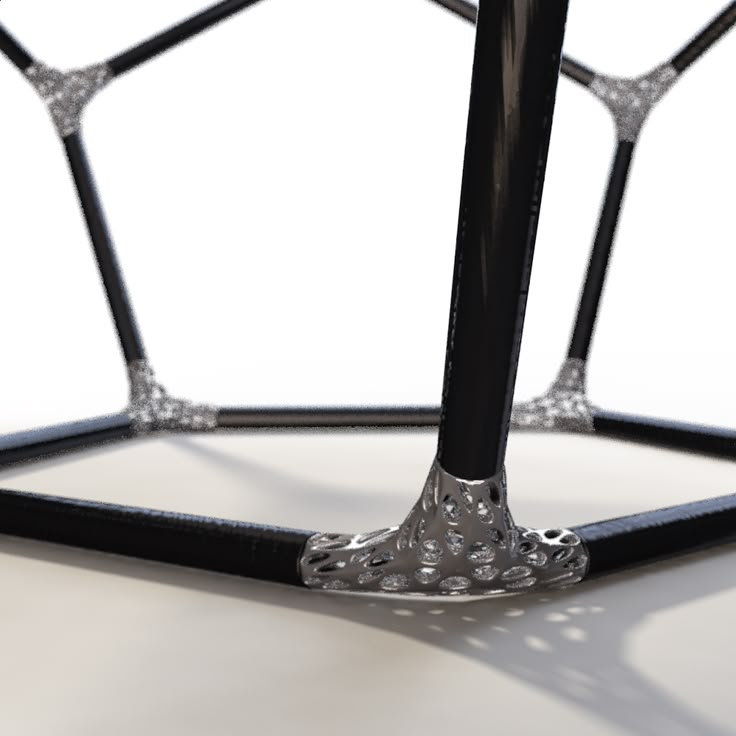 Fiberglass is an alternative to carbon fiber 3D printing when a more flexible end product is required. It can be combined with many materials of the same type and can provide high strength in the same way as carbon fiber.
Fiberglass is an alternative to carbon fiber 3D printing when a more flexible end product is required. It can be combined with many materials of the same type and can provide high strength in the same way as carbon fiber.
BENEFITS
➜ Strong and lightweight: Carbon fiber's best known property is its strength to weight ratio, so it is often used in high performance products. This is due to the low density.
➜ Temperature Resistance: is able to withstand higher temperatures than many polymers and even increase the HDT of these polymers when mixed to form a composite.
➜ Stiffness: While some polymers may have high strength and durability, this often comes at the expense of stiffness. The ability of carbon fiber to retain its shape under high loads is a huge plus for many applications.
DISADVANTAGES
➜ Expensive: Due to the complex manufacturing processes of carbon fiber, this material is known to be quite expensive, making it a luxury item, which is one of the reasons why it appears in high-end products but not on mass market.







